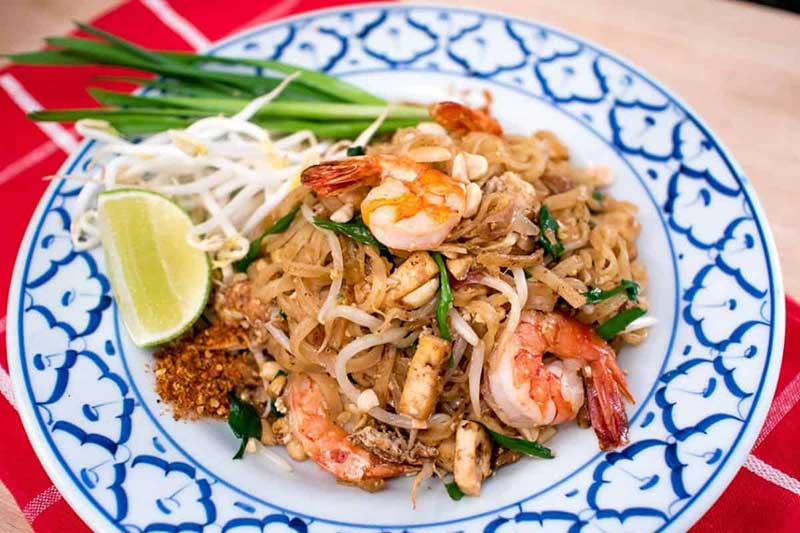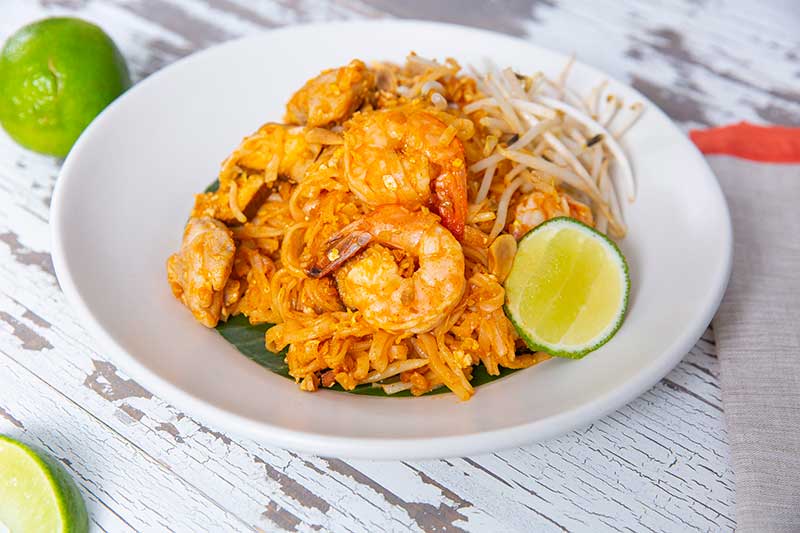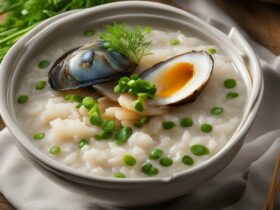Pad Thai is a popular Thai stir-fried noodle dish that has gained international acclaim for its vibrant flavors and delicious combination of textures. ozinsight will provide you with a step-by-step guide to creating an authentic Pad Thai dish that you can enjoy in the comfort of your own home. From preparing the noodles to adding the perfect combination of ingredients, this recipe will help you create a mouthwatering Pad Thai that is sure to impress your family and friends.
Introduction
If you’re a fan of Thai cuisine, you’ve likely heard of Pad Thai. This iconic dish is a staple in Thai street food and has become a beloved dish around the world. With its balance of sweet, sour, and savory flavors, Pad Thai offers a delightful culinary experience. By following this step-by-step guide, you’ll be able to recreate the authentic flavors of Pad Thai right in your own kitchen.
What is Pad Thai?
Pad Thai is a classic Thai dish made with stir-fried rice noodles, protein (such as shrimp, chicken, or tofu), eggs, and a combination of vegetables. It is typically seasoned with a tangy and slightly sweet sauce, often made from tamarind paste, fish sauce, sugar, and lime. The dish is then garnished with crushed peanuts, fresh herbs, and lime wedges, adding extra layers of flavor and texture.

The History of Pad Thai
Pad Thai has a fascinating history that reflects the cultural influences on Thai cuisine. It is believed that Pad Thai originated during World War II when Thailand faced a shortage of rice. To promote the consumption of noodles, the Thai government encouraged the creation of new noodle recipes, leading to the birth of Pad Thai. Over time, it gained popularity and became a cherished part of Thai culinary heritage.
Essential Ingredients for Pad Thai
To create an authentic Pad Thai, you will need the following ingredients:
- Rice noodles: Flat, wide rice noodles are traditionally used in Pad Thai. Soak them in water until they become soft and pliable before stir-frying.
- Protein: Choose from shrimp, chicken, tofu, or a combination of these. These protein options add substance and flavor to the dish.
- Eggs: Eggs are an essential component of Pad Thai. They contribute to the dish’s texture and provide a rich, savory element.
- Vegetables: Commonly used vegetables in Pad Thai include bean sprouts, green onions, and Chinese chives. These add freshness and a crunchy texture.
- Tamarind paste: Tamarind paste is the key ingredient in the Pad Thai sauce. It lends a tangy and slightly sour taste.
- Fish sauce: Fish sauce adds depth of flavor and saltiness to the dish. Look for high-quality fish sauce for the best results.
- Sugar: A small amount of sugar balances the flavors of Pad Thai and enhances the sweetness.
- Lime: Lime juice adds a zesty and refreshing element to the dish.
- Crushed peanuts: Crushed peanuts are sprinkled on top of Pad Thai, providing a satisfying crunch.

Step 1: Preparing the Noodles
- Soak the rice noodles in cold water for about 30 minutes or until they become soft and pliable.
- Drain the noodles and set them aside for later use.
Step 2: Preparing the Sauce
- In a small bowl, combine tamarind paste, fish sauce, sugar, and lime juice.
- Stir well until all the ingredients are fully incorporated, creating a balanced and flavorful sauce.
Step 3: Cooking the Protein
- Heat a wok or large skillet over medium-high heat and add oil.
- If using shrimp or chicken, cook them until they are fully cooked and lightly browned.
- If using tofu, sauté it until it becomes golden and slightly crispy.
Step 4: Adding Vegetables and Tofu
- Push the cooked protein to one side of the wok and add the vegetables and tofu to the other side.
- Stir-fry the vegetables and tofu until they are tender-crisp.
Step 5: Stir-Frying the Noodles
- Add the soaked and drained rice noodles to the wok.
- Stir-fry the noodles, combining them with the cooked protein, vegetables, and tofu.
- Use a gentle tossing motion to prevent the noodles from clumping together.
Step 6: Adding the Sauce
- Pour the prepared sauce over the noodles and toss everything together until the noodles are evenly coated.
- Continue to stir-fry for another 2-3 minutes to allow the flavors to meld together.
Step 7: Garnishing and Serving
- Remove the wok from the heat and sprinkle crushed peanuts over the Pad Thai.
- Garnish with bean sprouts, chopped green onions, and fresh herbs.
- Serve the Pad Thai with lime wedges on the side.
Tips for Perfect Pad Thai
- Soak the rice noodles until they are pliable but still slightly firm to ensure they don’t become overly soft during cooking.
- Use high heat and a well-seasoned wok or skillet to achieve the characteristic smoky flavor of stir-fried Pad Thai.
- Adjust the sweetness, sourness, and saltiness of the Pad Thai sauce to suit your personal taste preferences.
- Feel free to customize your Pad Thai by adding other ingredients like crushed garlic, chili flakes, or cilantro.
Frequently Asked Questions (FAQs)
Can I use other types of noodles instead of rice noodles?
While rice noodles are traditional for Pad Thai, you can experiment with other noodles like egg noodles or even spaghetti if you prefer.
Can I make Pad Thai vegetarian or vegan?
Absolutely! Simply omit the animal-based proteins and use tofu or additional vegetables as a substitute.
What can I substitute for tamarind paste?
If you don’t have tamarind paste, you can use a combination of lime juice and brown sugar as a substitute.
Can I make Pad Thai in advance?
Pad Thai is best enjoyed fresh, but you can prepare the ingredients ahead of time and stir-fry them just before serving.
Is Pad Thai spicy?
Pad Thai is typically mild in terms of spice. However, you can add chili flakes or a drizzle of sriracha if you prefer a spicier kick.
Conclusion
With this step-by-step guide, you now have the knowledge and confidence to create an authentic Pad Thai dish that will impress your taste buds. Remember to soak the noodles, prepare the sauce, and stir-fry the ingredients with care to achieve a harmonious blend of flavors. Whether you’re a Thai food enthusiast or simply looking to expand your culinary skills, this Pad Thai recipe is a must-try!












Got a Questions?
Find us on Socials or Contact us and we’ll get back to you as soon as possible.